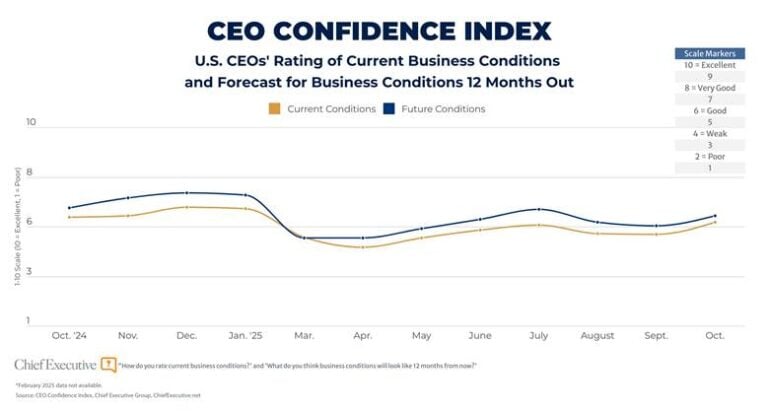
CEOs who are not looking at external options for addressing compliance are missing an opportunity to control and minimize the growing expense of ever-expanding regulations. But more importantly they are overlooking a way to drive additional value in their company.
As a highly transaction-oriented process, compliance is ripe for being provided by an outside service, but due to its complex nature most view it as an in-house only function. Originally, only back office activities like payroll and call centers were outsourced because they are highly transactional and not considered “core” to a company’s mission statement.
The Limitations of “This has to be done in-house” Thinking
Functions like HR and F&A (finance and accounting) were once off limits. They were viewed as in-house only. As time went on, people began to realize that a managed services approach could also be applied to more mission critical parts of the company. Soon it became evident that not just payroll, but also benefits administration, expatriate administration, account payable processing, and accounts receivable processing could be managed better and more cost effectively through a managed service provider. CEOs began to ask “If this is working so well and delivering value, why shouldn’t it be considered a solution for other company functions too?”
Opportunity, Opportunity, Opportunity!
Despite the recognition that managed services delivers significant value and cost savings, there are still functions that companies can’t give up. These include:
But don’t let these scare you away from looking critically at the many untapped functions that would be better performed by an outside service. The moment you hear “It can’t be done, it’s too core to the business, people won’t accept it, it’s too regulated…” you should be thinking OPPORTUNITY, OPPORTUNITY, OPPORTUNITY! Because it has been done… over and over again.
According to Jim Madden, the pioneer of human resources BPO (business process outsourcing), who grew Exult from a concept to more than $500 million in revenue, “Everyone said HR BPO couldn’t be done because they only saw obstacles. They couldn’t see that by creating automated desktop procedures and utilizing a managed service provider they could move time-consuming, tedious work off their plate. The same opportunity exists to address the multitude of people processing tedious compliance transactions today, as when HR BPO was developed almost two decades ago. It as though someone dialed the clock back to the year 2000.”
If it looks like a duck, swims like a duck, and quacks like a duck…
So what makes compliance any different? What makes AML (anti-money laundering) and KYC (know your customer) different? Nothing. Their key attributes look just like HR and F&A, which have been transformed by managed services. Compliance just hasn’t gone through the maturity curve of thinking; it hasn’t been tested by the “Why can’t it be done?” question.
Inevitably people will push back, like they did with HR and F&A, which are now routinely provided through managed services. The compliance folks will claim – without documented, legal support – that they have a regulatory requirement to do it in-house. They will argue about the risk. But in compliance, just like in HR and F&A someone has to set strategy, interpret and understand the regulations, apply the regulations to their business, and then come up with a set of procedures to make sure those regulations are followed. These critical procedures, all boil down to a series of almost instantaneous tasks that are completed as a person follows the desktop procedures their business created.
Not a Get Out Of Jail Free Card
Sure, there are some limitations to consider. You can’t give away the strategy, the understanding of the regulations, or the applicability of the regulations. You can’t push your risk onto somebody else. It doesn’t matter whether the managed service firm or the company screwed up payroll. The company must take ownership. As long as the process was followed, the risk in the numbers is still the accountability of the company. The buck will still always stop with the CEO. But, once the procedures are established, you can certainly have a managed service provider execute those procedures.
You may be thinking “But if I still own the risk, why bother?” Because right now you have a process that is based on desktop procedures that have to be followed every day, and are very monotonous. This is not your company’s core competency. It’s the type of job that people get distracted from because it doesn’t require a lot of thought (a series of tasks that each require limited thinking). This wears on people resulting in higher turn-over and added costs for replacement hires and training. Soon you find yourself spending more money on a process that isn’t driving the business or generating revenue. It’s just keeping you out of trouble.
The Case for an MSP (Managed Service Provider)
If you are a CEO dealing with compliance:
As a CEO you know this is important to get right – it will crush you if you get it wrong. All you care about in dealing with compliance, regulations and risk is that you want them done well, you want no problems, you want the most efficient solution, and you want to own as little of this as possible. Simply put: compliance costs too much and you can’t invest in it because it doesn’t drive revenue or margin.
By using a managed service for compliance, you are able to control the impact of the expense on your bottom line and eliminate a burdensome function. An outside service provider will deliver:
Conclusion
Organizations will always have those activities that are better performed by other service providers. The great organizations are able to tell the difference and take action early. It may require a shift in thinking, but great CEOs learn that they must let go. They must embrace the truth that certain core, even critical functions will be better managed and executed by specialists. The entire IT industry is a perfect example.
So get ahead of the curve on this. You are between a rock and a hard place and it’s just a matter of time before managed services is fully embraced as the solution. Based on my experience, I give it five years, tops. So make this a priority. Being among the early adopters will benefit your bottom line, your shareholders, and your people.
Related: 10 Tips for Making a Successful Acquisition




0

1:00 - 5:00 pm
Over 70% of Executives Surveyed Agree: Many Strategic Planning Efforts Lack Systematic Approach Tips for Enhancing Your Strategic Planning Process
Executives expressed frustration with their current strategic planning process. Issues include:
Steve Rutan and Denise Harrison have put together an afternoon workshop that will provide the tools you need to address these concerns. They have worked with hundreds of executives to develop a systematic approach that will enable your team to make better decisions during strategic planning. Steve and Denise will walk you through exercises for prioritizing your lists and steps that will reset and reinvigorate your process. This will be a hands-on workshop that will enable you to think about your business as you use the tools that are being presented. If you are ready for a Strategic Planning tune-up, select this workshop in your registration form. The additional fee of $695 will be added to your total.

2:00 - 5:00 pm
Female leaders face the same issues all leaders do, but they often face additional challenges too. In this peer session, we will facilitate a discussion of best practices and how to overcome common barriers to help women leaders be more effective within and outside their organizations.
Limited space available.

10:30 - 5:00 pm
General’s Retreat at Hermitage Golf Course
Sponsored by UBS
General’s Retreat, built in 1986 with architect Gary Roger Baird, has been voted the “Best Golf Course in Nashville” and is a “must play” when visiting the Nashville, Tennessee area. With the beautiful setting along the Cumberland River, golfers of all capabilities will thoroughly enjoy the golf, scenery and hospitality.
The golf outing fee includes transportation to and from the hotel, greens/cart fees, use of practice facilities, and boxed lunch. The bus will leave the hotel at 10:30 am for a noon shotgun start and return to the hotel after the cocktail reception following the completion of the round.